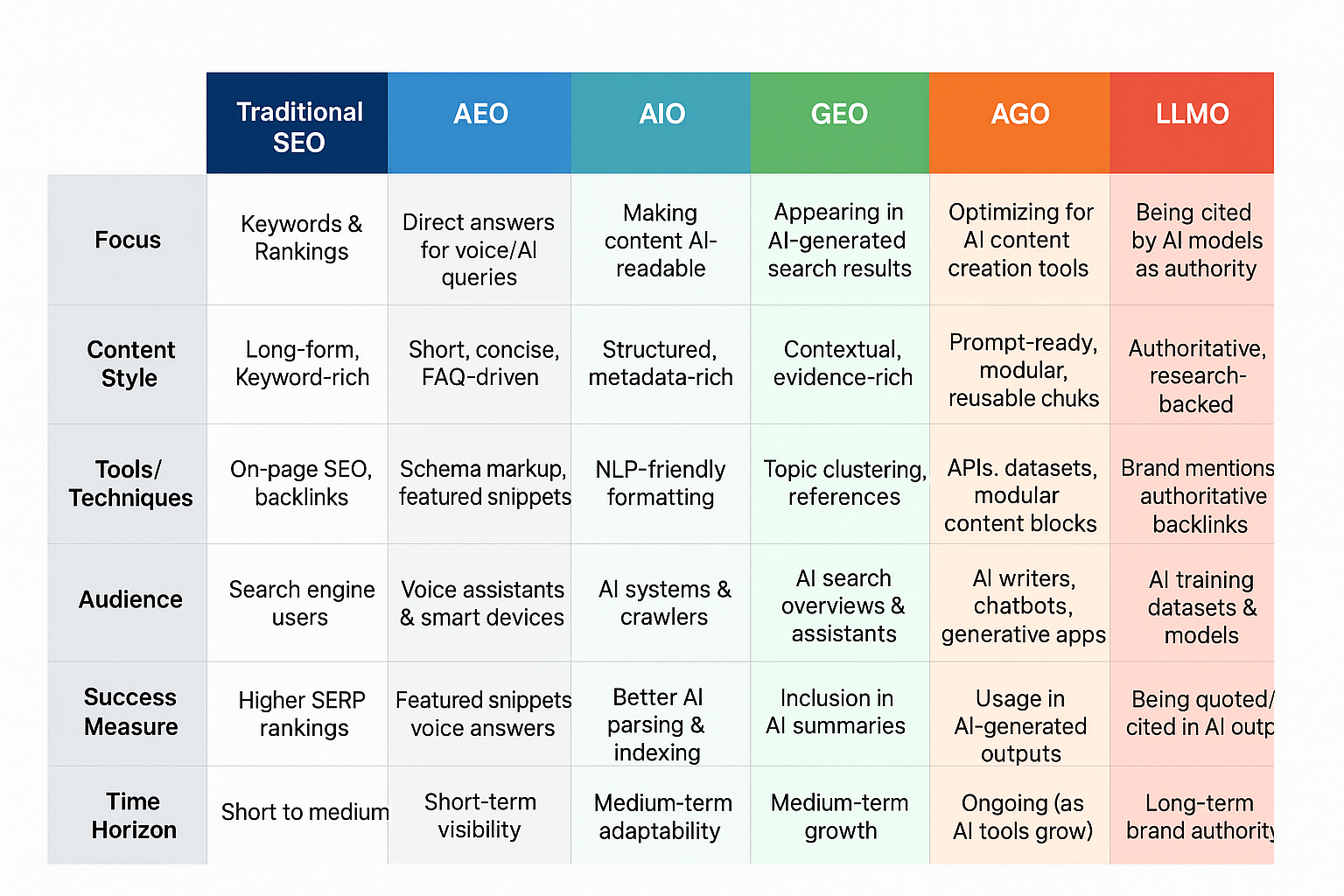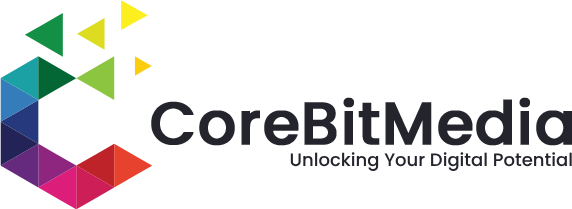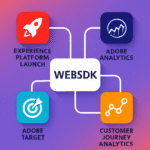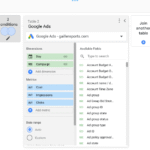The digital world is shifting fast. Traditional SEO is no longer the only way to stay visible. With AI assistants, voice search, and generative engines entering the picture, marketers must understand new optimization models. The infographic shows the comparison—now let’s break it down in detail.
- Focus
Traditional SEO: Targets keywords and SERP rankings. The aim is to get users from Google search results to your website.
AEO: Focuses on delivering quick, factual answers directly in search or through voice assistants. Example: “What’s the weather today?” answered instantly by Alexa.
AIO: Ensures AI systems can read and interpret your content. Think of it as optimizing for machines, not just people.
GEO: Positions your content to appear in AI-generated overviews and summaries, like Google’s AI-powered “overview box.”
AGO: Ensures your content is useful for generative AI tools, making it accessible in prompt-driven outputs.
LLMO: Focuses on building long-term authority so large language models recognize and cite your brand as a trusted source.
- Content Style
Traditional SEO: Long-form, keyword-optimized blogs and landing pages.
AEO: Short, conversational, FAQ-based content—ideal for snippets or voice responses.
AIO: Structured and metadata-rich content, making it easy for AI to parse.
GEO: Contextual, data-backed content with references that AI engines can confidently include in summaries.
AGO: Modular content pieces—like datasets, guides, and prompt-ready text blocks—that AI tools can adapt into various outputs.
LLMO: Authoritative content backed by research, whitepapers, or unique insights to earn trust in AI training data.
- Tools & Techniques
Traditional SEO: Backlinks, on-page optimization, keyword research.
AEO: Schema markup, structured FAQs, and featured snippets.
AIO: NLP-friendly formatting, alt tags, and clear metadata.
GEO: Topical clustering and credible referencing.
AGO: APIs, datasets, and flexible content formats designed for AI reuse.
LLMO: Strong brand mentions, research publications, and authoritative backlinks.
- Audience
Traditional SEO: Humans searching on Google.
AEO: Voice assistants like Siri, Alexa, and Google Assistant.
AIO: AI systems crawling and indexing the web.
GEO: AI-powered search assistants and generative overviews.
AGO: Content generators, chatbots, and AI-driven apps.
LLMO: Large language models themselves (like ChatGPT or Gemini) that “learn” from your authority.
- Success Measurement
Traditional SEO: SERP rankings and traffic volume.
AEO: Number of snippets or voice answers your content earns.
AIO: How well AI systems parse and display your content.
GEO: Inclusion in AI-generated summaries.
AGO: Brand mentions in AI-generated outputs.
LLMO: Being consistently quoted or cited in AI-driven answers.
- Time Horizon
Traditional SEO: Short to medium-term (can show results in months).
AEO: Short-term, since snippets and voice queries bring quick wins.
AIO: Medium-term, as AI-friendly content builds visibility over time.
GEO: Ongoing, evolving as AI tools expand.
AGO: Continuous, since generative AI adoption is accelerating.
LLMO: Long-term—building trust so AI consistently cites you as an authority.
Summary
Traditional SEO is still the base—but the future lies in multi-dimensional optimization. If you want your brand to stay visible in both search engines and AI-powered systems, you must integrate AEO, AIO, GEO, AGO, and LLMO into your content strategy.
This layered approach ensures your brand isn’t just ranking in Google but also recognized, reused, and recommended by AI models everywhere.







